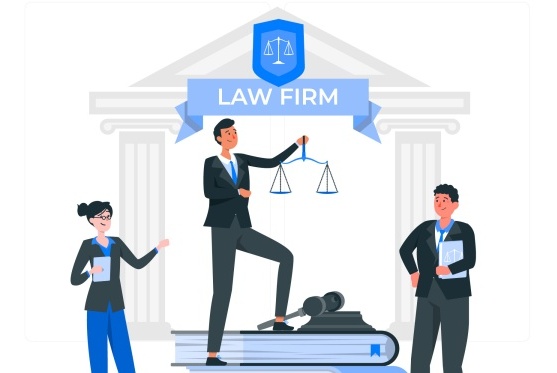
Compliance Requirements for Private Limited Companies
- Jan 11, 2020
- 35


WHAT ARE DISPUTES ?
Disputes are an inevitable part of life, whether they arise in business, personal matters, or legal concerns. In India, the legal system offers various methods for resolving these disputes, the most prominent being litigation. However, in recent years, Alternative Dispute Resolution (ADR) methods such as mediation, arbitration, and conciliation have gained popularity for their efficiency and cost-effectiveness. The legal process plays a crucial role in this framework by ensuring a structured, fair, and systematic approach to resolving conflicts. It serves as a foundation where each party gets a fair opportunity to present their case, promoting justice and fairness through the impartial evaluation of evidence. The process also offers legal remedies, facilitates the enforcement of rights, and ensures that disputes are resolved in accordance with the law, maintaining social order in society.
TYPES OF DISPUTE RESOLUTION
A. LITIGATION
DEFINATION:
Litigation refers to the formal legal process where disputes are taken to court for resolution. It is typically governed by various statutes and procedural rules, ensuring that each party has a fair chance to present their side.
TYPES OF COURTS INVOLVED :
District/Subordinate Courts:
District or subordinate courts are the first level of the judicial hierarchy. They handle most of the civil and criminal cases and are often the entry point for litigation.
High Courts:
High Courts deal with appeals from the lower courts and hear more significant or complex cases. They have broader jurisdiction over state-level issues.
Supreme Court:
The Supreme Court of India is the highest judicial authority in the country. It handles appeals from High Courts and has the power to hear matters involving constitutional interpretation, national importance, and public interest litigation (PILs).
Specialized Courts (e.g., Commercial Courts under the Commercial Courts Act, 2015):
In some cases, special courts are created to handle specific types of disputes, such as commercial or financial matters. The Commercial Courts Act 2015, established these courts to address business-related disputes more efficiently. Specialized courts like Commercial Courts are designed to handle disputes that arise from business or commercial transactions.
B. Alternative Dispute Resolution (ADR)
ADR provides alternatives to litigation and is often faster and more cost-effective.
MEDIATION : Mediation provides a platform where both parties engage in dialogue with the assistance of a neutral mediator. The Mediation Act, 2023, sets out guidelines for conducting mediation, aiming to reduce the burden on courts and ensure that the process is transparent and efficient.
ADVANTAGES OF MEDIATION :
Cost-Effectiveness: Mediation is generally much cheaper than litigation as it avoids court fees and lengthy legal processes.
Faster Resolution: Mediation sessions typically conclude much faster than court cases, often resolving disputes in days or weeks rather than years.
Control Over the Outcome: Parties involved in mediation have more control over the outcome, as the mediator helps facilitate an agreement rather than imposing a decision
ARBITRATION :
Arbitration is a formal method of dispute resolution where an independent third party, the arbitrator, makes a binding decision after hearing the arguments from both sides. It is governed by the Arbitration and Conciliation Act, 1996, which provides a legal framework for resolving disputes through arbitration and conciliation. Arbitration is commonly used in commercial and contractual disputes.
TYPES OF ARBITRATION:
Ad-hoc Arbitration: This type of arbitration is not administered by an institution. The parties involved in the dispute agree on the rules and arbitrators.
Institutional Arbitration:In this case, a specific arbitration institution (like the Indian Council of Arbitration) oversees the arbitration process, appoints the arbitrator, and manages the proceedings.
Statutory Arbitration: This type is required by law, such as when there is a statutory provision mandating arbitration for certain disputes, like consumer disputes.
ADVANTAGES OF ARBITRATION :
Binding Decisions:The decision of the arbitrator is final and binding on the parties, much like a court judgment, but without the need for protracted litigation.
Limited Judicial Intervention:Arbitration minimizes the role of courts in resolving disputes, with fewer opportunities for appeal, which speeds up the resolution process.
Confidentiality:Arbitration proceedings are private and confidential, which is a significant advantage for businesses wanting to protect their reputation.
CONCILIATION:
Conciliation is similar to mediation but with some distinctions. In conciliation, a neutral third party (the conciliator) not only facilitates discussions but also actively suggests solutions to the dispute. The conciliator may offer their opinion on the possible outcome of the case, which makes it somewhat different from mediation where the mediator simply facilitates without offering direct advice.
While the goal is still a mutual agreement, conciliation is often used in cases where the parties are not willing to come to an agreement on their own, and where the conciliator can help bridge gaps between the parties’ positions.
C. Public Interest Litigations (PILs)
Definition:Public Interest Litigation (PIL) allows citizens to approach the courts on behalf of the public or for the protection of public rights, even if they are not directly affected by the issue at hand. PILs are typically filed for matters concerning social justice, environmental protection, human rights, and other issues that affect large sections of society.
Notable Cases:
Hussainara Khatoon v. State of Bihar (1979): This was a landmark case in which PIL was used to secure the release of under-trial prisoners who had been languishing in jail without trial for extended periods. The case helped establish PIL as a tool to address systemic human rights violations.
SP Gupta v. Union of India (1981): Another foundational PIL case, which expanded the scope of PILs in India and allowed public-spirited citizens to seek justice on behalf of others.
ADVANTAGES OF PILs:
Access to Justice for the Marginalized: PILs provide an opportunity for the marginalized and disadvantaged sections of society to seek justice that they might otherwise be unable to access.
Judicial Oversight on Public Welfare: Through PILs, courts can intervene in matters concerning public health, the environment, and governance, ensuring accountability from the government and private entities.


CSR Today: Beyond Philanthropy
CSR now focuses on the triple bottom line: economic, social, and environmental goals. It’s no longer just about charity but about adopting sustainable and ethical business practices that benefit all stakeholders, including employees, customers, communities, and the environment.
Legal Framework in India
India is the first country to mandate CSR through the Companies Act, 2013. This law requires certain companies to:
Allocate 2% of their average net profits for CSR activities.
Focus on areas like education, healthcare, gender equality, and environmental sustainability.
Why is CSR Important?
1. Builds Trust: Consumers and employees prefer companies that are socially responsible.
2. Enhances Reputation: CSR boosts a company’s brand image.
3. Drives Sustainability: Companies that invest in CSR contribute to long-term societal and environmental health.
4. Regulatory Compliance: CSR helps businesses meet global and local ethical standards.
Examples of CSR Activities
Promoting education and vocational training.
Supporting healthcare and sanitation initiatives.
Reducing environmental impact through eco-friendly practices.
Contributing to community development projects.
HOW A TRIAL WORK IN INDIA :
1. Pre-Trial Proceedings
Before the actual trial begins, certain steps need to be followed:
Filing the Suit: The person bringing the case (plaintiff) files a formal complaint (suit) in the appropriate court.
Issuing Notice: Once the suit is filed the defendant (the person being sued) is issued a notice informing them about the lawsuit. The defendant must respond within a specific time frame.
Court Fees: The plaintiff must pay a fee to the court for filing the case. This fee is governed by the Court Fees Act 1870, which specifies the amount to be paid depending on the value of the dispute.
Suit Valuation: According to the Suits Valuation Act 1887, the value of the suit must be determined. This is important because it helps decide the appropriate court to handle the case.
2. Trial Process
Once the pre-trial steps are complete, the case moves into the trial phase. The main steps in the trial process are:
Filing Written Statements: The defendant files their response to the plaintiff’s complaint. This document is known as the written statement.
Framing of Issues: The court identifies the key issues in dispute between the parties based on the pleadings the plaintiff’s complaint and the defendant’s response.
Evidence Collection: Both parties gather and submit evidence to support their arguments. This can include documents, contracts, or other materials that are relevant to the case.
Witness Examination: Both parties present their witnesses. The plaintiff’s witnesses testify first, followed by the defendant’s witnesses. Each witness is questioned by both parties’ lawyers.
Arguments: After presenting evidence and witnesses, both sides make their final arguments before the court.
3. Post-Trial
After the trial process, the court issues a decision:
Judgment: The judge delivers a judgment based on the facts, evidence, and arguments presented during the trial. The judgment explains which party has won and why.
Decree:A decree is the formal order or decision made by the court following the judgment. It outlines the actions that must be taken based on the judgment.
Enforcement of Judgment:If the party who won the case doesn’t get what was awarded to them, they can ask the court to enforce the judgment. This might include actions like seizing property or other measures to ensure compliance.
Unknown
Lorem Ipsum available, but the majority have suffered alteration in some form, by injected humour, or randomised words Mirum est notare quam littera gothica, quam nunc putamus parum claram, anteposuerit litterarum formas
replayAnonymous
Lorem Ipsum available, but the majority have suffered alteration in some form, by injected humour, or randomised words Mirum est notare quam littera gothica, quam nunc putamus parum claram, anteposuerit litterarum formas
replayAnonymous
Lorem Ipsum available, but the majority have suffered alteration in some form, by injected humour, or randomised words Mirum est notare quam littera gothica, quam nunc putamus parum claram, anteposuerit litterarum formas
replay